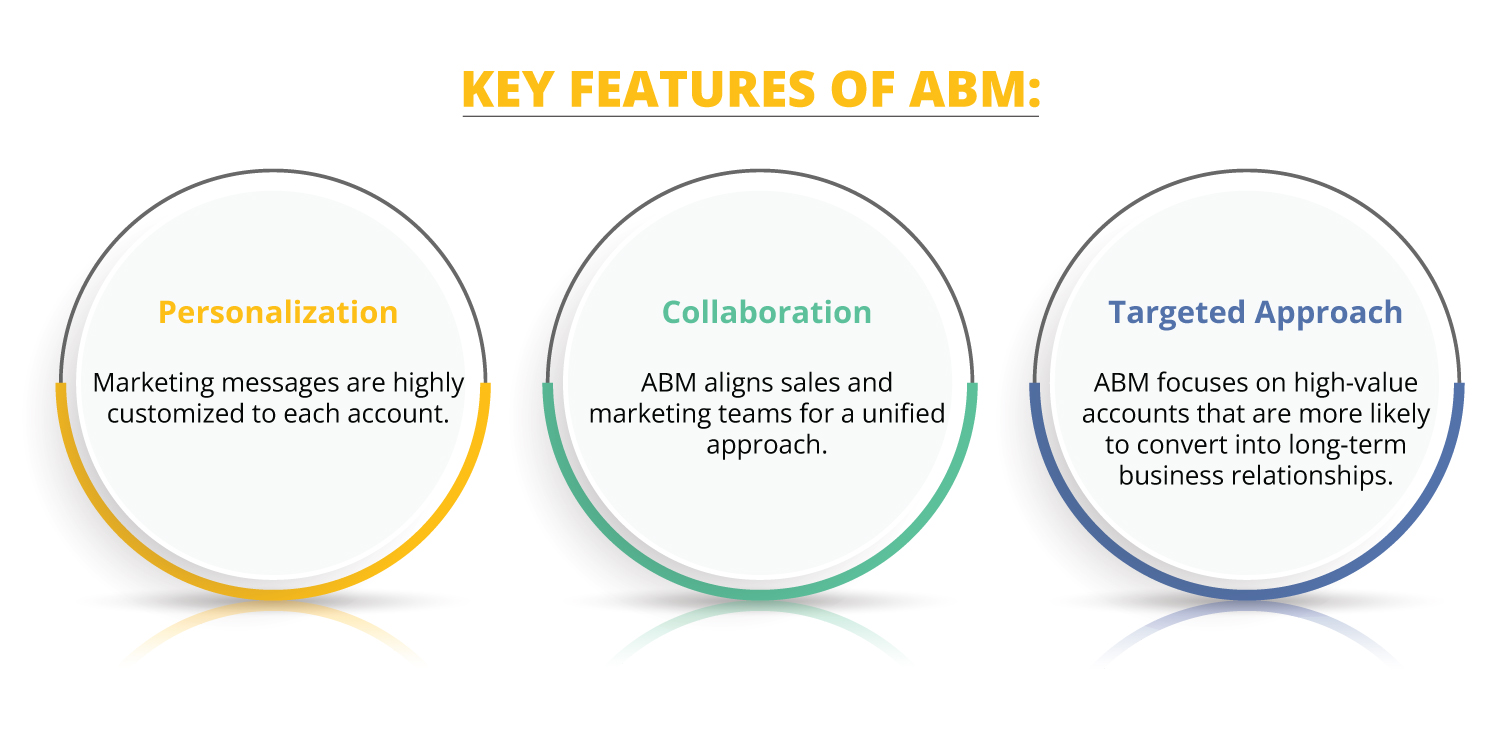Introduction to Account-Based Marketing (ABM)
In today’s B2B landscape, traditional marketing methods often fall short when it comes to reaching high-value clients. This is where Account-Based Marketing (ABM) comes into play. Instead of casting a wide net, ABM focuses on targeted, personalized marketing to specific accounts that are most valuable to a business.
In this guide, we will explore the concept of ABM, its benefits, and how businesses can use it to boost their marketing ROI.
What is Account-Based Marketing?
Account-Based Marketing (ABM) is a highly focused business strategy in which marketing and sales teams work together to target specific high-value accounts rather than catering to a broader audience. ABM is designed for B2B companies that aim to land larger, more strategic accounts with a personalized approach.
In essence, ABM flips the traditional marketing funnel. Instead of starting with a broad audience and narrowing it down, you start by identifying key target accounts and then deliver highly personalized marketing efforts to convert those accounts into clients.

Why is Account-Based Marketing Important?
ABM has gained immense popularity in recent years, especially among B2B marketers. Here are some reasons why:
Improved ROI:
Because you’re focusing on fewer, higher-value accounts, ABM tends to deliver a better return on investment compared to traditional marketing methods. By personalizing content and messaging for each target account, you significantly increase the chances of conversion.
Alignment Between Sales and Marketing:
ABM requires close collaboration between sales and marketing teams, helping to ensure that both teams are aligned on goals, strategies, and messaging. This alignment often leads to better lead nurturing and faster conversion.
Better Engagement:
Personalized marketing strategies are more likely to capture the attention of decision-makers within the target accounts. ABM allows marketers to craft highly relevant content that resonates with the specific needs of each account.
Efficient Use of Resources:
Since ABM focuses on high-value accounts, resources are spent more efficiently. Marketing efforts are directed toward accounts that have the highest potential to convert, ensuring better use of time, money, and effort.
How Does Account-Based Marketing Work?
Implementing an account-based marketing strategy requires a well-structured approach. Here’s a step-by-step guide on how ABM works:
Identify Target Accounts
The first step is to identify key accounts that would benefit the most from your product or service. These are typically high-value clients with the potential for long-term partnerships. Use data from your CRM system, customer behavior analytics, and input from the sales team to pinpoint these accounts.
Build a Personalized Strategy
Once you’ve identified your target accounts, the next step is to develop personalized content and campaigns tailored to each account. This can include customized email campaigns, personalized landing pages, or even targeted ads. The goal is to deliver highly relevant and valuable content to key decision-makers within these accounts.
Align Sales and Marketing Teams
ABM requires seamless collaboration between sales and marketing teams. The marketing team needs to understand the sales funnel and work closely with the sales team to deliver the right content at the right time. This alignment ensures that marketing efforts complement the sales team’s outreach, increasing the chances of closing deals.
Execute Multi-Channel Campaigns
ABM works best when you reach your target accounts across multiple channels. Use a combination of email marketing, social media, content marketing, and paid advertising to engage with your target accounts. Personalize your messaging on each platform to cater to the unique needs and pain points of each account.
Measure and Optimize
Once your ABM campaign is live, it’s crucial to measure its effectiveness. Use key metrics such as engagement rates, lead conversion rates, and overall ROI to determine the success of your strategy. Based on the insights you gather, optimize your campaigns for better performance.
Also Read: Understanding the Role of Personalization in Account-Based Marketing
Benefits of Account-Based Marketing
ABM provides several advantages that make it a preferred strategy for B2B marketers:
- Higher Conversion Rates: Because ABM targets specific accounts with personalized messaging, the likelihood of conversion is significantly higher.
- Stronger Client Relationships: By delivering tailored content that addresses the unique needs of each account, ABM helps build stronger, more meaningful relationships with clients.
- Increased Revenue: Focusing on high-value accounts that have the potential to generate long-term revenue allows businesses to maximize their profits.
- Shorter Sales Cycles: ABM speeds up the sales process by delivering highly relevant content to decision-makers, enabling them to make quicker purchasing decisions.
Best Practices for Account-Based Marketing
To ensure the success of your ABM efforts, consider the following best practices:
- Leverage Data: Use data analytics and insights to identify key accounts and tailor your marketing efforts to their needs. Understanding account behavior can help you create personalized campaigns.
- Create Tailored Content: Personalization is the key to ABM. Develop content that is specifically designed to address the pain points and challenges of your target accounts.
- Use the Right Tools: Invest in ABM tools and platforms that allow for personalized marketing automation, account tracking, and multi-channel campaigns. Popular tools include Demandbase, Terminus, and 6sense.
- Monitor and Measure: Regularly assess the performance of your ABM campaigns. Measure engagement, conversion rates, and revenue generated from each account, and use these metrics to refine your strategy.
Conclusion
Account-Based Marketing (ABM) offers a strategic and efficient way for B2B businesses to target and convert high-value accounts. By personalizing content, aligning sales and marketing teams, and focusing on specific accounts, ABM allows businesses to maximize their marketing efforts and see a higher ROI. Implementing a well-structured ABM strategy can help your business build lasting relationships and generate long-term revenue.
Start leveraging ABM today to revolutionize your marketing approach and take your business to new heights!
Key Takeaways:
- Account-Based Marketing focuses on high-value accounts with personalized marketing efforts.
- It provides higher ROI, better alignment between sales and marketing, and stronger client relationships.
- Successful ABM requires data-driven strategies, tailored content, and the right tools.

Add a Comment